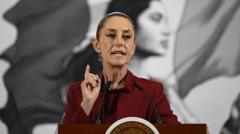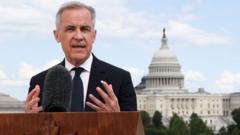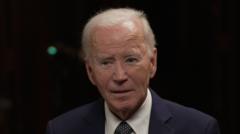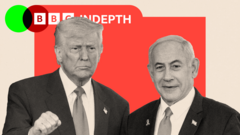In a major shift reflecting his campaign promises, President Donald Trump has formally signed an executive order aimed at beginning the dismantling of the U.S. Department of Education. Trump, who has long advocated for the elimination of this federal body, stated, "We'll shut it down as quickly as possible," arguing that current educational systems are not delivering desired results.
Trump Moves to Launch Dismantling of Education Department through Executive Order
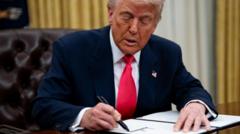
Trump Moves to Launch Dismantling of Education Department through Executive Order
President Trump's recent executive order sets the stage for dismantling the U.S. Department of Education, a goal he pledged during his 2024 campaign.
This executive action is not without hurdles, as its full closure would need Congressional approval—a scenario considered unlikely given the slim Republican majority in the Senate. Legal challenges are also anticipated from those opposing such drastic measures.
During a signing ceremony, Trump heaped praise on Linda McMahon, the appointed Secretary of Education, expressing his hope that she would become the department's last head. While some legislation to close the department may be introduced, the Republican-controlled Senate lacks the votes required for such a measure to pass.
Even if Congress does not formally move to eliminate the education department, Trump’s administration can still pursue significant staffing reductions and budget cuts similar to those seen in other agencies. The Department, established in 1979, plays a crucial role in overseeing public school funding and federal student loans, despite a common misconception that it controls school curriculums. Trump's administration has accused the Department of promoting liberal ideologies and aims to transfer its responsibilities to state and local entities.
As part of an ongoing effort to limit government expenditure, the Department of Education faces significant staffing reductions, leading to broader concerns about the implications for American education, including those related to students from low-income backgrounds. Many educational stakeholders have raised alarm over the potential fallout of such cuts, emphasizing the need for accessible education for all children.
Overall, this executive order lays the groundwork for a contentious battle regarding federal education policy and the role of government in educational funding and regulation in a polarized political climate.
During a signing ceremony, Trump heaped praise on Linda McMahon, the appointed Secretary of Education, expressing his hope that she would become the department's last head. While some legislation to close the department may be introduced, the Republican-controlled Senate lacks the votes required for such a measure to pass.
Even if Congress does not formally move to eliminate the education department, Trump’s administration can still pursue significant staffing reductions and budget cuts similar to those seen in other agencies. The Department, established in 1979, plays a crucial role in overseeing public school funding and federal student loans, despite a common misconception that it controls school curriculums. Trump's administration has accused the Department of promoting liberal ideologies and aims to transfer its responsibilities to state and local entities.
As part of an ongoing effort to limit government expenditure, the Department of Education faces significant staffing reductions, leading to broader concerns about the implications for American education, including those related to students from low-income backgrounds. Many educational stakeholders have raised alarm over the potential fallout of such cuts, emphasizing the need for accessible education for all children.
Overall, this executive order lays the groundwork for a contentious battle regarding federal education policy and the role of government in educational funding and regulation in a polarized political climate.



